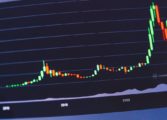Day Trade Tips: Unlocking the Secrets to Successful Trading

Introduction
Day trading, also known as intraday trading, refers to the practice of buying and selling financial instruments within the same trading day. This fast-paced trading strategy requires swift decision-making, extensive market knowledge, and effective risk management. In this article, we will provide a comprehensive overview of day trade tips, including its definition, types, popular strategies, and historical analysis of advantages and disadvantages.
Understanding Day Trade Tips

Day trade tips encompass a range of techniques and strategies aimed at maximizing profits and minimizing risks in intraday trading. These tips are designed to help traders make informed decisions and navigate the volatile market environment. Various factors, such as technical analysis, fundamental analysis, and market sentiment, influence the selection of day trade tips.
Types of Day Trade Tips
1. Technical Analysis: This approach involves analyzing price patterns, trends, and indicators to predict future market movements. Common technical analysis tools include moving averages, relative strength index (RSI), and Bollinger Bands. By utilizing these indicators, traders can identify entry and exit points, set stop-loss orders, and determine the overall market direction.
2. Fundamental Analysis: This strategy focuses on evaluating the financial health and performance of a company or asset to determine its intrinsic value. Traders using fundamental analysis consider factors such as earnings reports, economic data, industry trends, and company news. By understanding the fundamental factors driving an asset, traders can make informed decisions about its long-term prospects.
3. News-based Trading: This approach relies on the immediate impact of news events on asset prices. Traders closely monitor economic data releases, corporate announcements, and geopolitical events that can cause significant market movement. By reacting quickly to news, traders can capitalize on short-term price fluctuations and generate profits.
Quantitative Measurements of Day Trade Tips
Quantitative measurements play a crucial role in evaluating the effectiveness and profitability of day trade tips. Traders often rely on various metrics and performance indicators to gauge their trading success. Some common quantitative measurements include:
1. Profit and Loss (P&L): P&L calculations track the net profit or loss generated from day trading activities. Traders compare their P&L against their initial investment or trading capital to assess their profitability.
2. Win Rate: The win rate represents the percentage of profitable trades compared to total trades executed. A higher win rate indicates a higher probability of successful trades.
3. Risk-Reward Ratio: This ratio measures the potential reward against the possible risk in a trade. It helps traders assess if a trade is worth taking by comparing the potential profit to the potential loss.
4. Average Daily Range: Traders analyze the average daily range of an asset to identify potential trading opportunities. This measurement helps determine the expected price movement within a given trading session.
Differentiating Day Trade Tips
Each day trade tip strategy has its own set of characteristics and objectives. Here are some key differentiating factors:
1. Time Horizon: Some day trade tips focus on short-term price movements within minutes or hours, while others target longer-term trends within a day.
2. Risk Profile: Different strategies carry varying levels of risk. Some tips, such as scalping, aim for small profits with minimal risk, while others, like breakout trading, involve higher risks with potential for larger gains.
3. Technical vs. Fundamental: Traders can choose to rely on technical analysis, such as chart patterns and indicators, or fundamental analysis, such as company news and financial data.
Historical Analysis of Day Trade Tips
Over the years, day trade tips have evolved, and their pros and cons have become evident. Here’s a historical overview:
1. Advantages:
– Potential for quick profits: Day trading allows traders to capitalize on short-term price fluctuations and generate profits within a single trading day.
– Increased market exposure: With day trading, traders can explore various markets and instruments, expanding their trading opportunities.
– Flexibility: Traders can adapt their strategies to changing market conditions and exploit unique opportunities.
2. Disadvantages:
– High risk: Day trading involves rapid decision-making and increased exposure to market volatility, leading to potential losses.
– Emotion-driven decisions: The fast-paced nature of day trading can trigger impulsive decisions, driven by emotions, which can lead to poor outcomes.
– Costs and fees: Frequent trading may accumulate commission fees, spreads, and other costs, impacting overall profitability.
Conclusion
Day trade tips serve as valuable tools for traders aiming to profit from short-term market movements. By understanding the various types of day trade tips, their quantitative measurements, and historical advantages and disadvantages, traders can enhance their decision-making process and mitigate risks. However, it is crucial to thoroughly research and backtest any strategy before implementing it. Successful day trading requires discipline, continuous learning, and the ability to adapt to the dynamic nature of financial markets.
















































